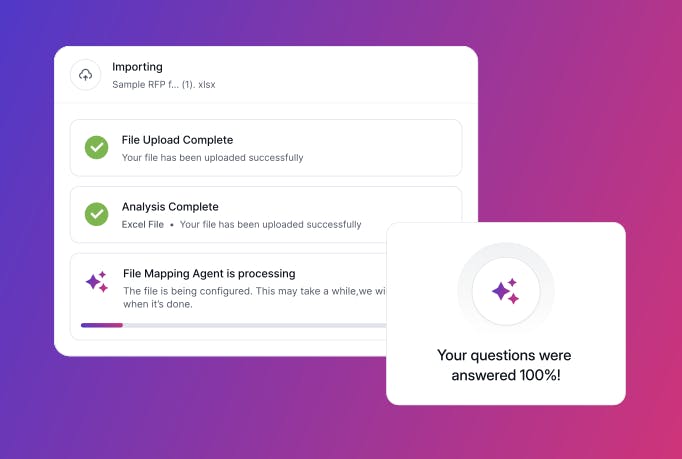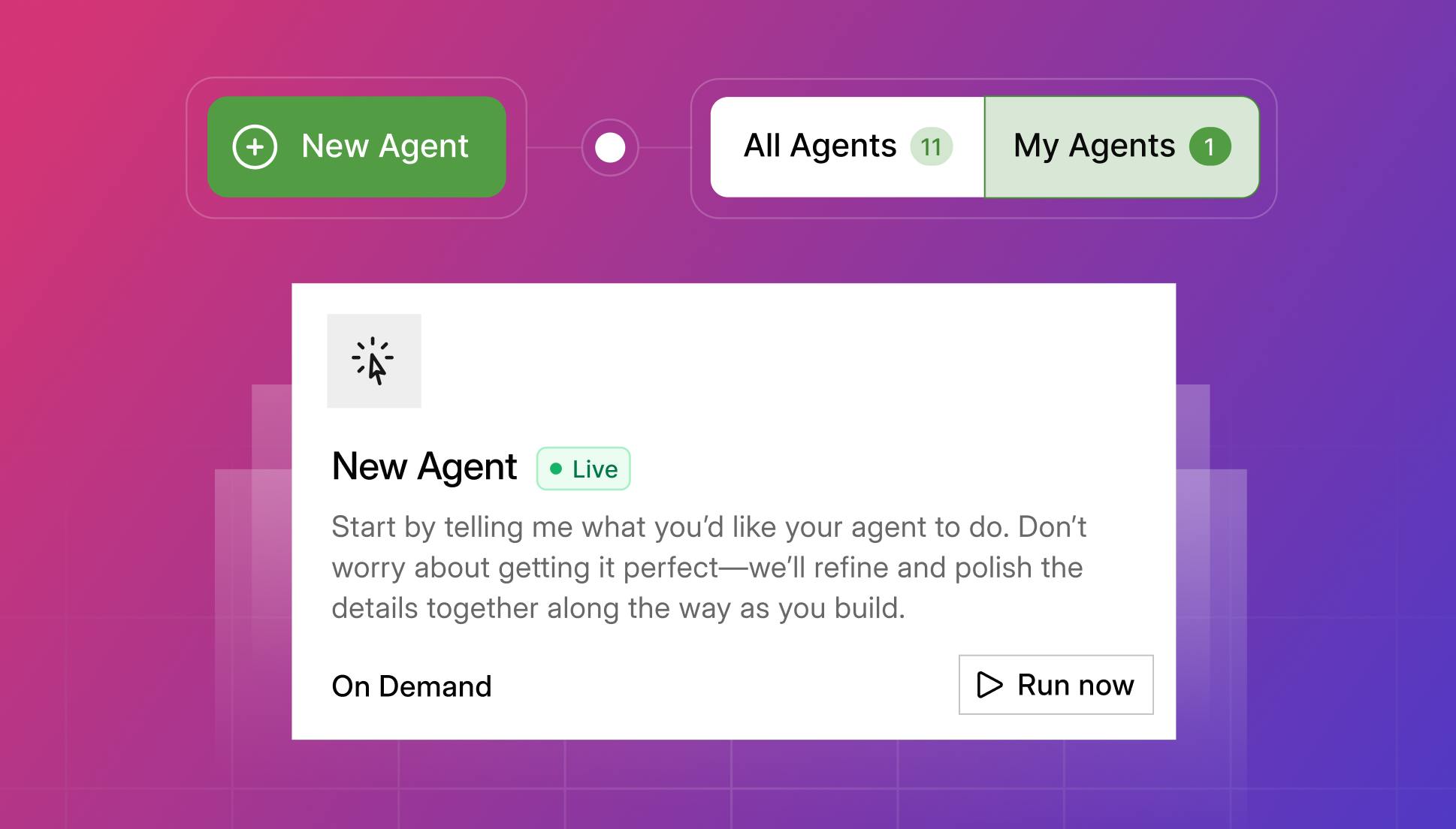The bar for proposal responses has risen and shows no signs of stopping. Teams are juggling tight timelines, limited resources, and mounting expectations from buyers who want responses that are not only accurate but also customized, polished, and complete. What used to be a manual, linear process is now a fast-moving collaboration that demands precision at scale.
The bar for proposal responses has risen and shows no signs of stopping. Teams are juggling tight timelines, limited resources, and mounting expectations from buyers who want responses that are not only accurate but also customized, polished, and complete. What used to be a manual, linear process is now a fast-moving collaboration that demands precision at scale.
To keep pace, proposal teams are turning to AI. Not as a shortcut nor to replace human judgment, but to support faster, smarter, and more consistent content development — as covered in this AI software checklist for decision-makers.
In this post, we’ll look at the core benefits of using AI for proposal writing, explore use cases and challenges, and share tips to help you get started.
AI enhances every stage of proposal creation
AI tools can play a central role across the proposal lifecycle. From pre-RFP planning through to final delivery, purpose-built AI software helps teams generate, edit, and manage content faster and more effectively.
One major advantage is speed. AI tools can accelerate early-stage content generation, suggest edits that match brand tone, and recommend reusable language drawn from past wins. The result: stronger, more consistent messaging in less time. With the right implementation, proposal teams can also increase visibility across projects, collaborate more efficiently, and spend less time chasing SMEs.
As outlined in a previous post about the business impact of AI in sales and proposal management, companies using AI to support proposal workflows report gains in win rates, employee experience, and sales velocity.
Using AI for proposal writing: the basics

AI proposal writing starts with thoughtful preparation. Whether you're experimenting with tools or rolling out a full platform, your success depends on foundational best practices — from content organization to human oversight. For an overview of how AI is changing proposal workflows from end to end, see this detailed breakdown.
Implementation
To support accurate, relevant content generation, AI needs access to high-quality source material. That begins with a well-maintained Content Library. Organizing content by theme, tagging answers consistently, and removing duplicates allows AI systems to surface the most applicable responses in context.
Standardizing terminology, tone, and formatting also increases confidence in AI outputs. Establish an editorial calendar to review and update content regularly. When the source content reflects your current positioning, the AI can deliver better suggestions and reduce manual rewriting.
Consider cross-functional access as well. Giving the right stakeholders visibility into shared content helps keep materials aligned across departments and ensures updates aren't missed.
Prompting
Getting quality results from AI starts with quality input. Prompts should include clear instructions, relevant context, and any required structure or tone. For example, instead of "Write a response," a stronger prompt would be: "Draft a two-paragraph overview of our data encryption practices for a technical audience. Use formal language and include a mention of SOC 2 compliance."
Effective prompting also involves referencing previous answers, brand guidelines, or key points to include. Including this information helps AI systems tailor content more effectively. As outlined in this post about RFP response and management, even small changes to a prompt can significantly influence output quality.
Teams should document common prompt structures and refine them over time. The more consistent your inputs, the more reliable your outputs.
For additional tips on how to improve AI-generated bid responses, this post on writing bids with AI explores how to build and refine responses that stay accurate and on-brand.
Review and compliance
AI-generated content should always go through human review. Even with the strongest inputs and well-trained models, AI can misinterpret intent or omit critical details.
Many platforms can flag incomplete sections, identify unsupported claims, or highlight mismatches between the prompt and the final output. Still, human reviewers are essential to ensure compliance, especially for regulated industries or government proposals.
Setting up a dedicated QA process for AI-generated content will help to reduce errors while maintaining efficiency. Reviewers should be trained to assess AI content for clarity, accuracy, and alignment with submission requirements.
Ethics and responsible use
AI writing tools depend on data inputs, which introduces ethical considerations. Teams must safeguard any proprietary, regulated, or customer information being used to inform AI systems.
Bias is another concern. If the underlying content or model training data reflects unintentional bias, AI outputs can amplify those issues. Choose providers that audit for fairness and allow you to control what data trains the models.
Finally, it’s important to maintain oversight. AI should support proposal teams, not replace them. Clearly defining roles, responsibilities, and review checkpoints helps preserve quality and accountability.
AI application in proposal creation: use cases

AI supports measurable improvements across the proposal process. Here are some of the most impactful ways teams are using AI today:
Intelligent, automated bid/no bid decisions
AI tools can evaluate opportunities based on factors like historical win rates, internal resource availability, and project fit. These insights help proposal teams quickly align on which RFPs to pursue and which to decline, improving focus and reducing wasted effort.
RFx and questionnaire shredding
Rather than manually scanning lengthy RFP documents, AI tools can extract and categorize questions and requirements in seconds. This makes it easier to assign tasks, route questions to the right SMEs, and avoid missing important requests.
Instant draft generation and refinement
AI enables fast creation of first drafts using approved content, improving initial quality and reducing start-from-scratch effort. These drafts can then be refined using built-in tone adjustment, formatting tools, or SME edits.
Knowledge democratization and management
By surfacing accurate, vetted responses from past projects, AI gives every team member — regardless of tenure or role — the ability to contribute effectively. This makes institutional knowledge easier to find, use, and preserve.
Challenges and limitations of AI in proposal writing
Despite its benefits, AI in proposal writing isn’t without challenges. One major risk is overreliance. When teams lean too heavily on AI to draft or complete responses, they may miss nuances, misrepresent capabilities, or overlook compliance issues.
Another concern is quality degradation. If the content used to train the system or populate prompts is outdated or inconsistent, the results are likely to reflect those weaknesses. Proposals could become repetitive or drift from current positioning.
There are also organizational hurdles. Implementing AI requires process changes, stakeholder buy-in, and often new skills. Without dedicated onboarding, training, and change management, adoption can stall.
To overcome these risks, teams should build AI into a structured content and review workflow. Assign clear responsibilities, track performance metrics, and continuously refine your approach based on outcomes. AI should enhance human expertise, not bypass it.
The future of AI in proposal writing: what’s next?

As AI capabilities expand, proposal teams are starting to adopt AI Agents — tools that proactively assist with specific tasks based on triggers, preferences, or patterns.
Instead of waiting for a prompt, an AI Agent might recommend content based on a new opportunity, assign tasks based on availability, or flag potential blockers before deadlines slip. These systems help teams scale without sacrificing quality.
Responsive is investing in these capabilities to help teams automate more without losing control. Learn more about how AI Agents are evolving in this post.
Supercharge proposals with Responsive AI
Responsive gives proposal teams the AI-powered tools necessary to work faster, collaborate more effectively, and stay compliant — without compromising quality.
With built-in support for generative AI, automated project management, and robust content controls, Responsive helps organizations like Microsoft and BlackRock reduce response times and improve outcomes across industries.
